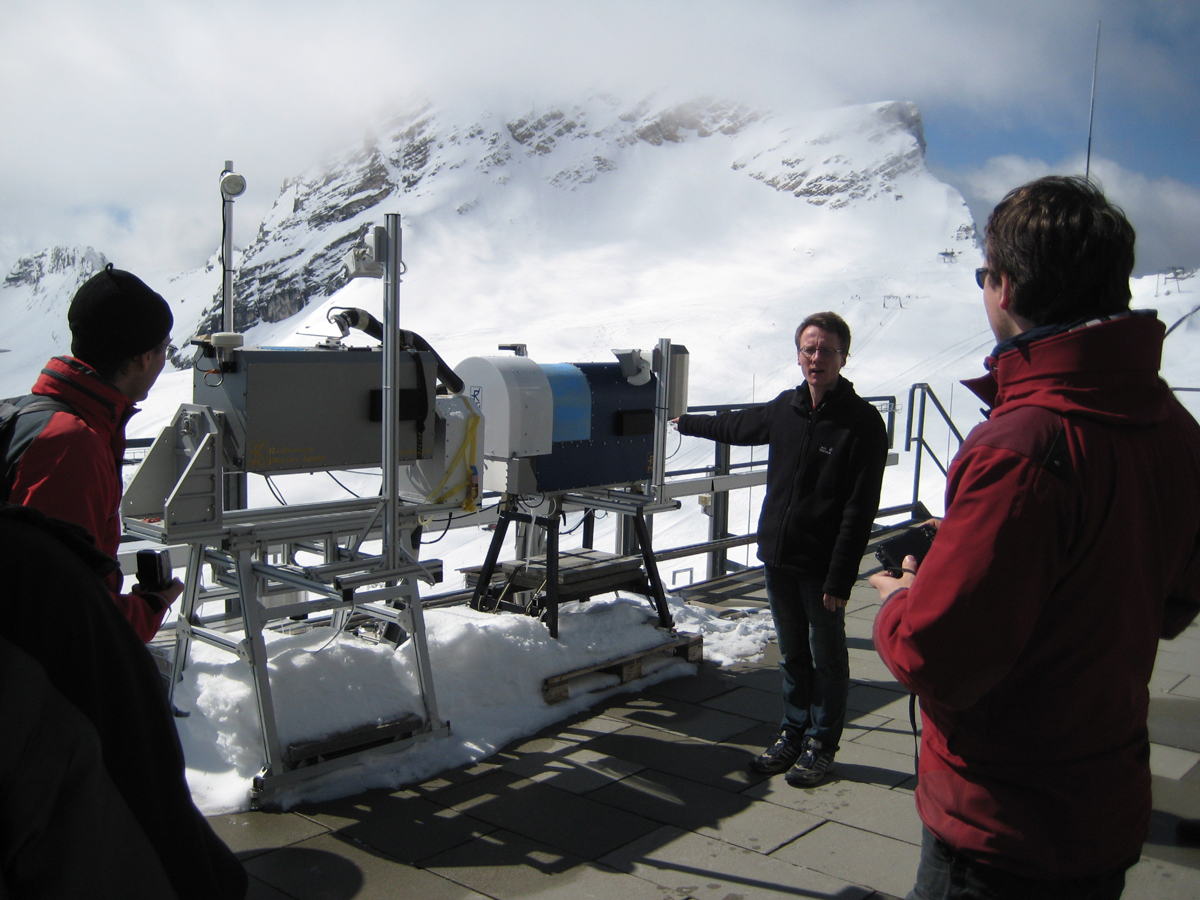
With passive microwave radiometry, important atmospheric parameters like temperature and humidity profiles, integrated water vapor content (IWV) and liquid water path (LWP) can be retrieved under almost all weather conditions. Such continuous datasets are especially important for climate studies. Two Microwave Radiometers (MWR) are currently operated at the UFS by the Institute of Geophysics and Meteorology of the University of Cologne in collaboration with the Meteorological Institute of the University of Munich.
The two instruments are: The Humidity and Temperature PROfiler (HATPRO, installed in 2005) and the Dual Polarization Radiometer (DPR, installed in 2007). Together, the two MWR cover a frequency range from 22 to 150 GHz.
.

Using the combined measurements of both instruments, the following parameters can be retrieved with high temporal resolution (1 sec):
Due to the high elevation of the UFS site, the combination of HATPRO and DPR allows us to observe thin liquid water clouds (with a special focus on super-cooled liquid clouds) with very high accuracy. Such clouds have been found to have a large impact on the Earth's radiation budget and thus are very important for climate studies. It is one of the major goals of the MWR measurements, at the UFS to develop long-term datasets of cloud and atmosphere properties that can be used for satellite and model evaluations.
In addition to the continuous MWR measurements the instrumentation has been extended by radar systems and in-situ probes during the TOSCA Project. With the synergistic use of active, passive and in-situ observations, the microphysical properties of snowfall could be investigated.
A unique combination of remote sensing instruments has been deployed at the Environmental Research Station Schneefernerhaus for deriving microphysical properties of falling snow. A large part of the global precipitation falls as snow and liquid precipitation often occurs via the ice phase. The global distribution of snowfall is thus very important for climate studies, especially concerning the rapid changes of the hydrological cycle in the polar regions. The main problem in the derivation of snowfall parameters is the high spatial and temporal variability of the snow crystals, whose interactions with atmospheric radiation is very difficult to describe. The TOSCA project addresses this point in combining the unique information contained in a combination of passive radiometers, active radar technology and in-situ measurement methods within a unified retrieval scheme. The integrated retrieval algorithm to be developed will aim at deriving the vertical distribution of the specific mass of snow. This includes not only carrying out and carefully evaluating the measurements, but also the modelling of the interaction (i.e. scattering processes) of atmospheric radiation with the snow crystals.